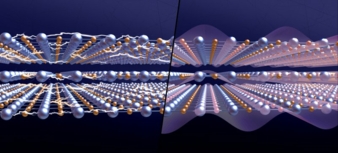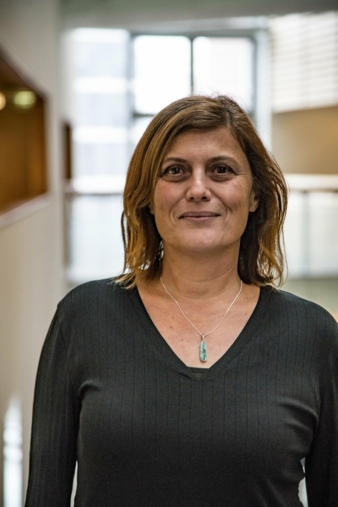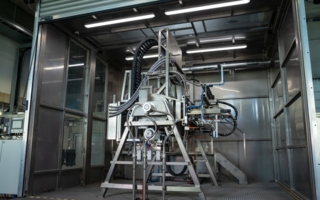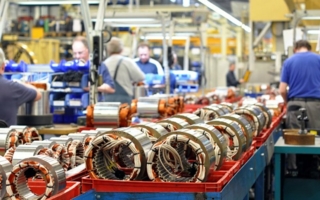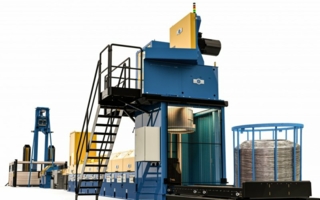01/11/2021 – High temperature superconductors
Making the strange metal state in even stranger
Researchers from Chalmers University of Technology, Sweden, have uncovered a striking new behavior of the “strange metal” state of high temperature superconductors. The discovery represents an important piece of the puzzle for understanding these materials, and the findings have been published in the highly prestigious journal Science
Superconductivity, where an electric current is transported without any losses, holds enormous potential for green technologies. For example, if it could be made to work at high enough temperatures, it could allow for lossless transport of renewable energy over great distances. Investigating this phenomenon is the aim of the research field of high temperature superconductivity. The current record stands at -130°C, which might not seem like a high temperature, but it is when compared to standard superconductors which only work below -230°C. While standard superconductivity is well understood, several aspects of high temperature superconductivity are still a puzzle to be solved. The newly published research focusses on the least understood property – the so called “strange metal” state, appearing at temperatures higher than those that allow for superconductivity.
“This ‘strange metal’ state is aptly named. The materials really behave in a very unusual way, and it is something of a mystery among researchers. Our work now offers a new understanding of the phenomenon. Through novel experiments, we have learned crucial new information about how the strange metal state works” says Floriana Lombardi, Professor at the Quantum Device Physics Laboratory at the Department of Microtechnology and Nanoscience at Chalmers.
Believed to be based on quantum entanglement
The strange metal state got its name because its behaviour when conducting electricity is, on the face of it, far too simple. In an ordinary metal, lots of different processes affect the electrical resistance – electrons can collide with the atomic lattice, with impurities, or with themselves, and each process has a different temperature dependence. This means that the resulting total resistance becomes a complicated function of the temperature. In sharp contrast, the resistance for strange metals is a linear function of temperature – meaning a straight line from the lowest attainable temperatures up to where the material melts.
“Such a simple behaviour begs for a simple explanation based on a powerful principle, and for this type of quantum materials the principle is believed to be quantum entanglement.” says Ulf Gran, Professor at the Division of Subatomic, High-Energy and Plasma Physics at the Department of Physics at Chalmers.
“Quantum entanglement is what Einstein called ‘spooky action at a distance’ and represents a way for electrons to interact which has no counterpart in classical physics. To explain the counterintuitive properties of the strange metal state, all particles need to be entangled with each other, leading to a soup of electrons in which individual particles cannot be discerned, and which constitutes a radically novel form of matter.”
Exploring the connection with charge density waves
The key finding of the paper is that the authors discovered what kills the strange metal state. In high temperature superconductors, charge density waves (CDW), which are ripples of electric charge generated by patterns of electrons in the material lattice, occur when the strange metal phase breaks down. To explore this connection, nanoscale samples of the superconducting metal yttrium barium copper oxide were put under strain to suppress the charge density waves. This then led to the re-emergence of the strange metal state. By straining the metal, the researchers were able to thereby expand the strange metal state into the region previously dominated by CDW – making the ‘strange metal’ even stranger.
“The highest temperatures for the superconducting transition have been observed when the strange metal phase is more pronounced. Understanding this new phase of matter is therefore of utmost importance for being able to construct new materials that exhibit superconductivity at even higher temperatures,” explains Floriana Lombardi.
The researchers’ work indicates a close connection between the emergence of charge density waves and the breaking of the strange metal state – a potentially vital clue to understand the latter phenomenon, and which might represent one of the most striking evidence of quantum mechanical principles at the macro scale. The results also suggest a promising new avenue of research, using strain control to manipulate quantum materials.
The article, ‘Restored strange metal phase through suppression of charge density waves in underdoped YBa2Cu3O7–δ’ is now available in the leading scientific journal Science. The research was carried out by Eric Wahlberg, Riccardo Arpaia, Edoardo Trabaldo, Ulf Gran, Thilo Bauch and Floriana Lombardi from Chalmers University of Technology, in collaboration with researchers from Politecnico di Milano, University La Sapienza, Brandenburg University of Technology and the European Synchrotron facility (ESRF).
Chalmers University of Technology
Department of Microtechnology and Nanoscience - MC2
Kemivägen 9, 41258 Gothenburg, Sweden
Contact person is Floriana Lombardi
Tel.: +46 31 772-3318
floriana.lombardi@chalmers.se
www.chalmers.se
Chalmers University of Technology in Gothenburg, Sweden, conducts research and education in technology and natural sciences at a high international level. The university has 3100 employees and 10,000 students, and offers education in engineering, science, shipping and architecture. With scientific excellence as a basis, Chalmers promotes knowledge and technical solutions for a sustainable world. Through global commitment and entrepreneurship, we foster an innovative spirit, in close collaboration with wider society.The EU’s biggest research initiative – the Graphene Flagship – is coordinated by Chalmers. We are also leading the development of a Swedish quantum computer. Chalmers was founded in 1829 and has the same motto today as it did then: Avancez – forward.

